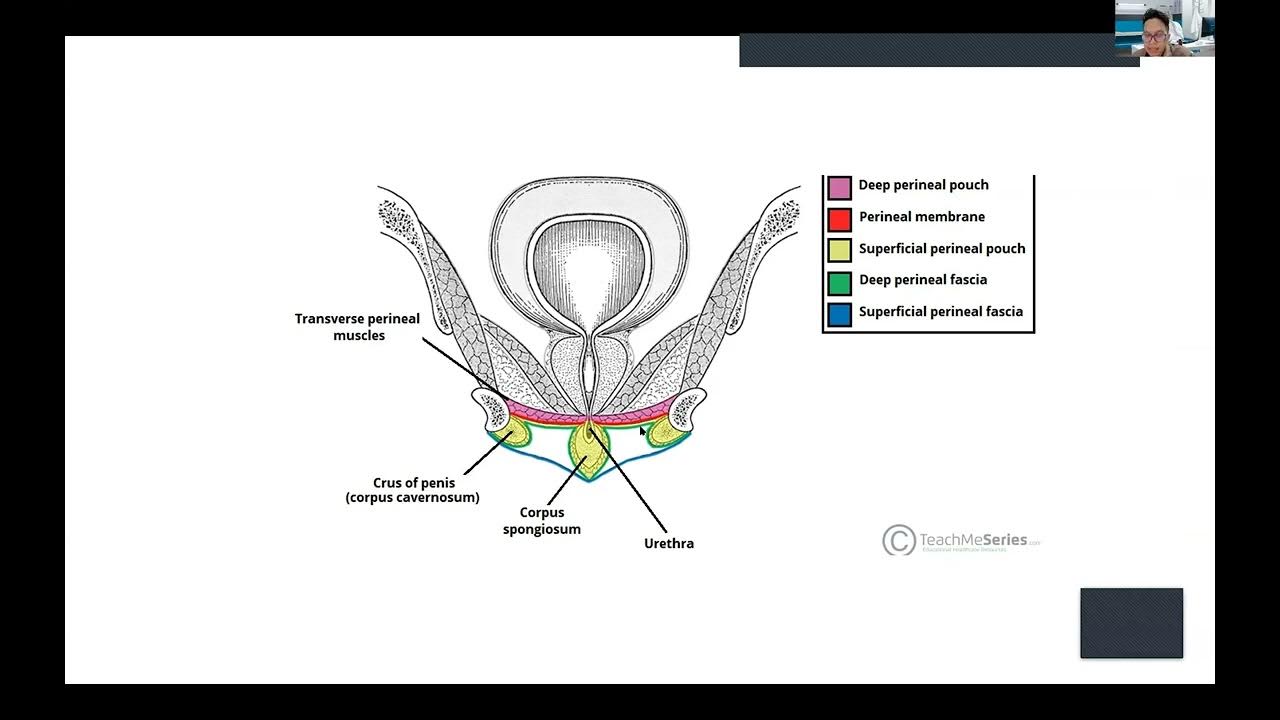Reproductive System: Female External Genitalia
Summary
TLDRThis video provides an in-depth exploration of the female external genitalia, starting with the mons pubis, which is covered in skin and contains sebaceous and sweat glands. It moves on to describe the labia majora and minora, highlighting the difference in size and structure. The clitoris is discussed in detail, emphasizing its erectile tissue and sensory function. The vestibule, including the urethral and vaginal orifices, is also covered, along with associated structures like the para-urethral and greater vestibular glands. The video concludes with a look at the arterial supply and nerve innervation crucial for sexual arousal and function.
Takeaways
- 😀 The external genitalia of females are covered with skin that can vary in terms of hair, sebaceous glands, and sweat glands. Sensory innervation plays a critical role in sexual arousal.
- 😀 The mons pubis, located anteriorly in the external genitalia, consists of adipose tissue and sebaceous glands, contributing to its sensory function.
- 😀 The labia majora are two larger folds of skin extending from the mons pubis and contain variable amounts of adipose tissue and sweat glands.
- 😀 The labia minora are smaller folds of skin located medially, lacking hair and containing fewer sweat glands but abundant sebaceous glands.
- 😀 The clitoris consists primarily of erectile tissue, specifically the corpus cavernosa, which becomes engorged during sexual arousal.
- 😀 The glans clitoris is the most distal part of the clitoris, and its size can vary, but it remains a highly sensitive area.
- 😀 The crura (plural) or crus (singular) of the clitoris are erectile tissues attached to the ischiopubic ramus, and they become engorged during sexual excitement.
- 😀 The vestibule is the area containing the openings for the urethra and vagina, and it also contains the para-urethral glands that secrete mucus.
- 😀 The vaginal orifice, which is significantly larger than the urethral orifice, is bordered by the hymen and has greater vestibular glands that help lubricate the area.
- 😀 The bulb of the vestibule is erectile tissue located near the vaginal orifice, homologous to the bulb of the penis, and plays a role in sexual arousal.
- 😀 Arterial supply to the vulva comes from the femoral artery (superiorly) and the internal pudendal artery (inferiorly), while the pudendal nerve provides innervation, especially to the clitoris.
Q & A
What is the primary function of the external genitalia in females as discussed in the script?
-The external genitalia play a key role in sexual arousal, allowing for the engorgement and erection of erectile tissues like the clitoris. They also serve as pathways for the exit of urine and menstrual flow.
What is the mons pubis and what are its key characteristics?
-The mons pubis is a mound of fatty tissue located anteriorly in the female external genitalia. It is covered with skin and contains sebaceous (oil) and sudoriferous (sweat) glands, with a high sensory innervation crucial for sexual arousal.
How do the labia majora and labia minora differ in terms of size and structure?
-The labia majora are larger, thicker folds of skin and adipose tissue, whereas the labia minora are smaller, thinner, and hairless. The labia minora also have a higher density of sebaceous glands but fewer sweat glands compared to the labia majora.
What is the clitoris, and how does it function during sexual arousal?
-The clitoris is an erectile organ made up mainly of corpus cavernosa tissue. During sexual arousal, the blood vessels in the clitoris dilate, allowing blood to fill the erectile tissues, causing the clitoris to become engorged and erect.
What is the function of the prepuce in relation to the clitoris?
-The prepuce is the skin that covers the body of the clitoris. It serves as a protective covering and is not visible in the provided image.
What are the crura of the clitoris and how do they relate to the erectile tissue?
-The crura (or crus, when referring to one side) are extensions of erectile tissue that attach to the ischiopubic ramus, contributing to the erectile function of the clitoris during sexual arousal.
What is the vestibule, and what are the key structures within it?
-The vestibule is an area of the external genitalia that houses two main orifices: the external urethral orifice and the vaginal orifice. It also contains para-urethral glands and greater vestibular glands, which have lubricating functions.
What are the para-urethral glands, and what is their function?
-The para-urethral glands, also known as Skene's glands, secrete small amounts of mucus near the external urethral orifice. They are homologous to the male prostate and are involved in lubrication.
What role does the hymen play in the external genitalia, and what changes occur after it is broken?
-The hymen is a membrane that partially covers the vaginal orifice. Once broken, it leaves behind remnants known as hymenal caruncles.
How do the greater vestibular glands contribute to sexual function?
-The greater vestibular glands secrete lubricating fluid during sexual excitement or arousal, facilitating smoother entry into the vaginal orifice.
Outlines

此内容仅限付费用户访问。 请升级后访问。
立即升级Mindmap

此内容仅限付费用户访问。 请升级后访问。
立即升级Keywords

此内容仅限付费用户访问。 请升级后访问。
立即升级Highlights

此内容仅限付费用户访问。 请升级后访问。
立即升级Transcripts

此内容仅限付费用户访问。 请升级后访问。
立即升级5.0 / 5 (0 votes)






